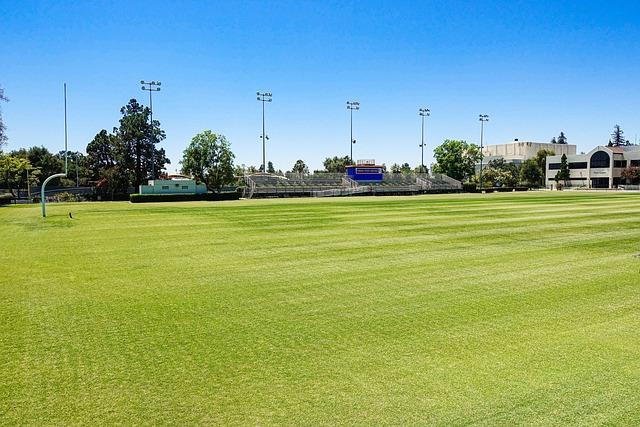Balancing academics and athletics remains a key challenge for student athletes across New York State. As competition intensifies both in classrooms and on playing fields, the New York State Public High School Athletic Association (NYSPHSAA) is emphasizing the importance of maintaining a proper equilibrium between school responsibilities and sports commitments. This article explores how student athletes can effectively manage their dual roles, highlights the association’s latest guidelines, and examines the support systems in place to help young competitors succeed both academically and athletically.
Challenges Faced by Student Athletes Balancing Academics and Athletics
Student athletes frequently find themselves navigating a complex landscape where time is the most precious commodity. The physical demands of rigorous training schedules and competitive events often clash with the relentless academic deadlines and classroom responsibilities. Many grapple with chronic fatigue and stress while striving to excel both on the field and in the classroom, which can lead to burnout or decreased performance in either or both domains. Limited downtime and the need for constant travel for games make it increasingly difficult for these students to maintain a healthy work-life balance, often putting their mental health at risk.
Additionally, the pressure to perform comes from multiple directions-coaches, teachers, family, and the athletes themselves-creating an environment where time management skills become both essential and elusive. Balancing commitments often means sacrificing social activities and personal downtime, which are critical for emotional well-being. Below is a breakdown of some key stressors faced by student athletes:
- Demanding schedules: Overlapping practice sessions and study requirements
- Physical exhaustion: Impact on concentration and academic retention
- Travel obligations: Missing classes and falling behind on schoolwork
- Emotional pressures: Managing expectations from multiple stakeholders
| Challenge | Impact | Common Coping Strategy |
|---|---|---|
| Time Management | Missed deadlines, stress | Prioritized scheduling |
| Physical Fatigue | Lower academic focus | Rest & nutrition plans |
| Travel & Absences | Falling behind in classes | Extra tutoring & online resources |
| Emotional Stress | Anxiety & burnout | Support networks & counseling |
Effective Time Management Strategies for Maintaining Academic Performance
Balancing academics and athletics requires a disciplined approach to managing time efficiently. Prioritizing tasks and setting clear, achievable goals for both schoolwork and training schedules can prevent overwhelm and boost productivity. Implementing daily and weekly planners helps student-athletes visualize their commitments, allowing them to allocate sufficient time for studying, practice, and rest. Tools such as time-blocking techniques enable focused sessions for homework while avoiding procrastination. Additionally, consistent review and adjustment of these schedules ensure ongoing alignment with changing demands throughout the semester.
Equally important is developing strategies that support mental and physical well-being alongside academic success. Incorporating breaks and recovery periods enhances focus and stamina, preventing burnout during intense training or exam periods. The following table outlines an effective sample weekly routine that balances class hours, practice, study time, and rest, designed to maintain peak performance in both arenas:
| Day | Class Hours | Practice Time | Study Sessions | Rest/Recovery |
|---|---|---|---|---|
| Monday | 6 hrs | 2 hrs | 1.5 hrs | 1 hr |
| Wednesday | 6 hrs | 2 hrs | 2 hrs | 1 hr |
| Friday | 6 hrs | 1.5 hrs | 2 hrs | 1.5 hrs |
| Saturday | – | 2 hrs | 3 hrs | 2 hrs |
- Set realistic goals: Break large assignments into manageable steps and align them with training milestones.
- Leverage technology: Use apps for reminders, scheduling, and productivity tracking.
- Seek support: Communicate proactively with coaches, teachers, and counselors regarding workload and scheduling.
Role of Coaches and Educators in Supporting Student Athlete Success
Coaches and educators serve as pivotal pillars in guiding student athletes through the complexities of balancing academics and athletics. Their role extends beyond training and teaching fundamental skills; they act as mentors who instill discipline, time management, and a strong work ethic. By fostering open communication and setting realistic expectations, these professionals ensure that young athletes prioritize their educational commitments without sacrificing athletic development. Effective collaboration between coaches and teachers can lead to tailored support systems, empowering students to excel in both arenas.
Key strategies employed by these mentors include:
- Structured Scheduling: Developing personalized calendars that align practices, games, and study periods.
- Academic Check-ins: Regular monitoring of grades and classroom performance to promptly address any issues.
- Mental Health Support: Encouraging a balanced lifestyle that includes rest and recreation to prevent burnout.
| Support Aspect | Coach’s Role | Educator’s Role |
|---|---|---|
| Time Management | Help create practice-friendly study schedules | Offer flexible deadlines when necessary |
| Academic Monitoring | Encourage accountability for schoolwork | Report progress and challenges proactively |
| Emotional Well-being | Promote teamwork and positive reinforcement | Provide counseling and motivational resources |
Mental Health Considerations and Resources for Student Athletes in New York Schools
Student athletes in New York face unique challenges juggling rigorous academic schedules alongside demanding sports commitments. Recognizing these pressures, schools and athletic associations have expanded mental health support tailored specifically for this group. Access to licensed counselors, stress management workshops, and peer support groups are now integral parts of many programs designed to foster emotional resilience. These resources not only help athletes navigate anxiety and burnout but also promote healthy coping mechanisms that enhance both performance and well-being.
Parents, coaches, and educators should be aware of key signs indicating mental health struggles among student athletes, such as sudden mood changes, withdrawal from team activities, or declining school performance. Early intervention is crucial and facilitated through easy-to-access channels.
Below is a list of available support services commonly offered in New York schools:
- Onsite Counseling Services: Licensed professionals available during school hours
- 24/7 Mental Health Hotlines: Immediate assistance for crisis situations
- Workshops & Seminars: Focused on stress reduction, time management, and building mental toughness
- Peer Support Networks: Encouraging sharing and peer-led guidance
| Resource | Description | Contact Info |
|---|---|---|
| NYSPHSAA Mental Health Program | Comprehensive support tailored for athletes | nysphsaa.org |
| School-Based Clinics | Confidential counseling onsite | Available through school counseling office |
| Crisis Text Line | Text HOME to 741741 for 24/7 support | crisistextline.org |
Key Takeaways
In navigating the demanding worlds of academics and athletics, student athletes in New York State continue to demonstrate resilience and dedication. The New York State Public High School Athletic Association’s guidelines serve as a crucial framework, helping students maintain a healthy balance that nurtures both their educational goals and athletic ambitions. As schools and communities prioritize this equilibrium, the future looks promising for young athletes striving to excel both on the field and in the classroom.





